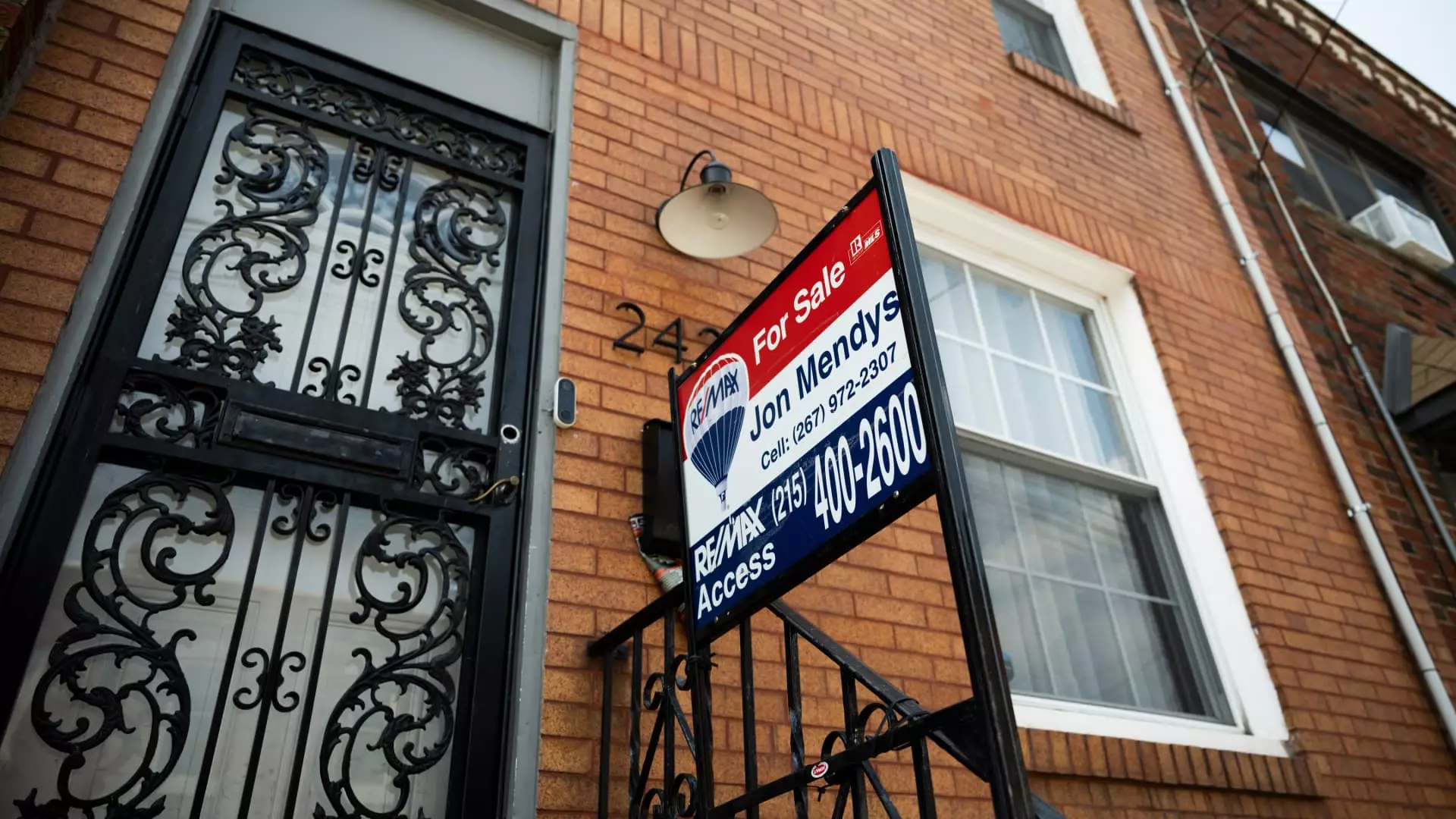The U.S. housing market is currently experiencing a confluence of challenges that have led to a marked decline in sales and an evolving landscape for potential homeowners. As mortgage rates remain stubbornly high, coupled with elevated housing prices and a limited inventory of available listings, aspiring buyers find themselves grappling with unprecedented hurdles. Recent statistics shed light on this complex scenario, indicating a downward trend in sales and heightened affordability challenges.
In January 2024, the National Association of Realtors (NAR) reported a staggering 4.9% decline in the sales of previously owned homes, bringing the annualized total to approximately 4.08 million units. This drop comes in stark contrast to analysts’ predictions of a mere 2.6% decline. Such a notable decrease suggests more than just seasonal fluctuations; it reflects deeper issues related to buyer sentiment and market conditions. Interestingly, while sales figures show a 2% increase compared to January 2023, they represent a grim backdrop, remaining close to a 15-year low.
This decrease appears linked to market activity from previous months, especially since many contracts likely originated during a period when mortgage rates dipped below 7%. The lingering effects of higher rates seem to weigh heavily on the market, as potential buyers remain apprehensive and hesitant to make commitments in this uncertain environment.
According to Lawrence Yun, the chief economist for the NAR, housing affordability has become a substantial barrier for many buyers. Despite the Federal Reserve’s attempts to stimulate the economy through interest rate cuts, mortgage rates have remained relatively unchanged. This stagnation combined with high property prices has compounded the challenges facing first-time homebuyers and other potential buyers seeking to navigate this evolving market.
The rising median home price—recorded at $396,900 in January 2024, reflecting a 4.8% annual increase—only exacerbates the affordability crisis. Subsequently, the average time a home spent on the market reached 41 days, the longest duration recorded since January 2020, indicating a slowdown in buyer activity and a struggle for sellers in a less favorable market.
As of the end of January, the inventory of homes for sale rose by 3.5% from December, totaling 1.18 million units. This figures represent a 17% uptick compared to the same month in the previous year, signaling a shift towards a more favorable inventory situation. However, with a supply of only 3.5 months based on current sales pace, the market is far from achieving a balanced state—six months is generally regarded as adequate. This discrepancy perpetuates price pressures, making it even more challenging for buyers to secure affordable homes.
Interestingly, the variability in inventory and sales is palpable across price brackets. While entry-level homes priced between $100,000 and $250,000 saw a modest decline in sales, more luxurious properties priced over $1 million experienced a remarkable 27% increase. This divergence suggests a bifurcated market, where affluent buyers are less impacted by rising rates and economic uncertainty.
Statistics reveal that first-time homebuyers—who traditionally account for about 40% of the market—are currently making up only 28% of sales. This figure has held steady over the past year but underscores the significant challenges facing this demographic. With rising prices and high mortgage rates, many aspiring homeowners are either delaying their purchase or opting to remain renters.
Additionally, the prevalence of all-cash offers—currently comprising 29% of sales—seems to benefit those with deep pockets but alienates a significant segment of the market. Even though this percentage has dipped from 32% in the prior year, it highlights a market increasingly favoring well-off buyers who can eschew financing altogether.
The U.S. housing market finds itself at a crossroads, grappling with a combination of high prices, stubbornly elevated mortgage rates, and a tepid inventory. The current landscape presents a set of challenges that both aspiring homeowners and real estate professionals must navigate carefully. While there are glimmers of hope with rising inventories, the path to homeownership remains fraught for many, particularly first-time buyers. Moving forward, close attention to economic signals, market dynamics, and government policy will be essential in determining whether these trends persist or if a reversal toward more favorable conditions will emerge.

Leave a Reply